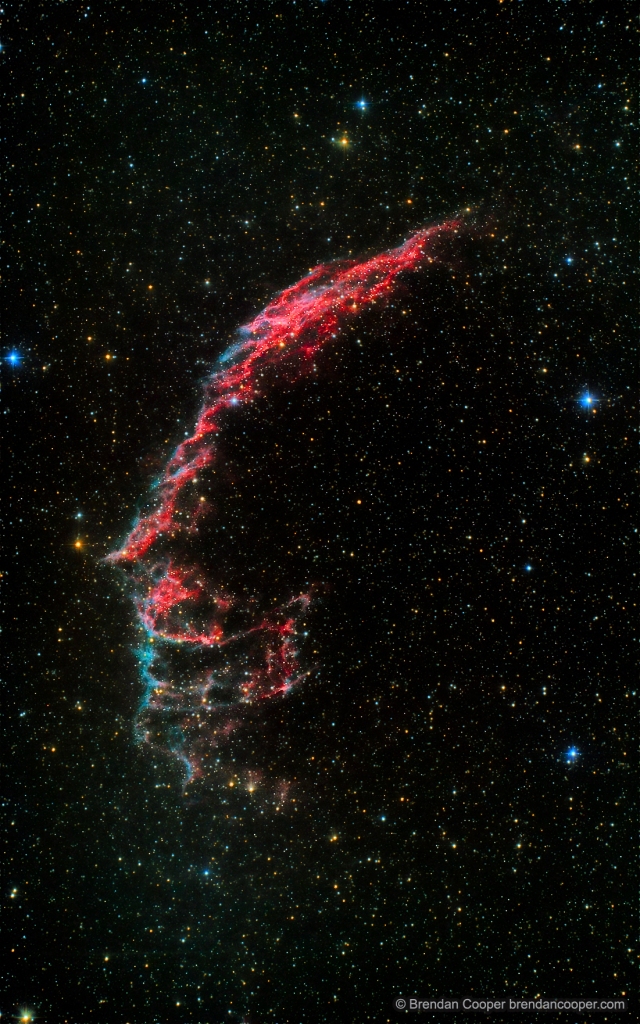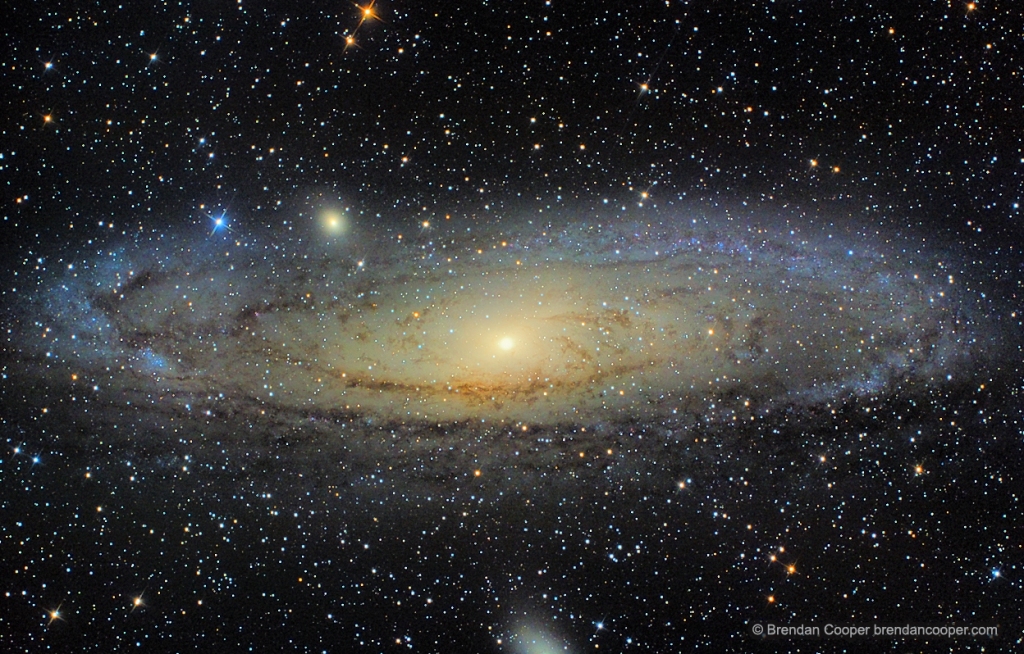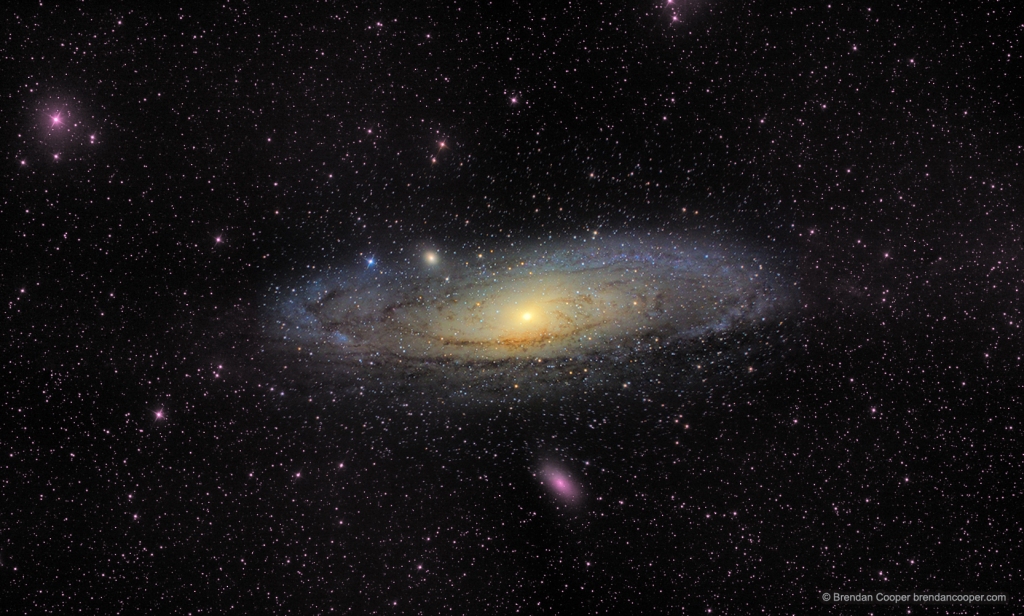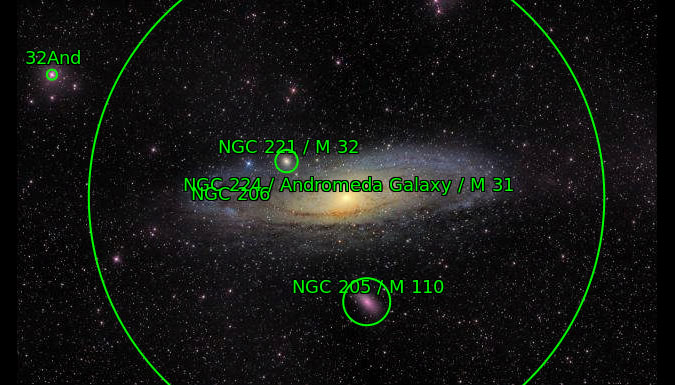Sometimes the simple shots are the most effective.

Nice, isn’t it? I like the way the diffraction spikes interact, like a Mondrian painting or something.
What we have here are three stars (in case you didn’t know what a star looks like, or can’t count).
30 Cyg, to the right of the image, is officially a white giant star with a blue tint. Given that I’d describe mine as blue with a white tint, this shows the difficulty in accurately representing colours. There are calibration tools that reproduce scientifically accurate colours, and in fact my software (StarTools) has sophisticated colour processing baked in. But sometimes, well, colour is subjective, as seems the case here. Which begs the whole question: is this art, or science? Is it subjective, or objective? I’ve decided just to avoid the question altogether and admire the pretty pictures.
31 Cyg A is a bright orange giant, with a smaller blue companion called 31 Cyg B. They form a binary system which orbits at a distance of a mere 11 astronomical units (1AU is the average distance from the centre of the earth to the centre of the sun, which is 149.6 million kilometres). As they are viewed side-on, every 10.36 years they are in eclipse for 63 days.
I couldn’t really find much about when the next eclipse will happen, but eventually calculated it’s in February 2024. Which brings up an intriguing notion: if I took one shot like this, every session, for the next three years, then put them together to form an animation, what would I see? Could I really make out Cyg 31 A and B coming closer together and then merging for two months, then separating again?
And to go back to the art v science debate, would this actually contribute anything to science?
31 Cyg’s eclipses have been used in the past to help determine some attributes of orange giants, such as mass and outer atmosphere. I wonder whether, if I did this, it could provide any useful data? Apart from anything however, it would enable me to admire the pretty pictures – all 846 of them (and counting, down…)







